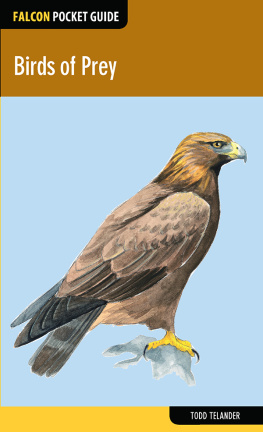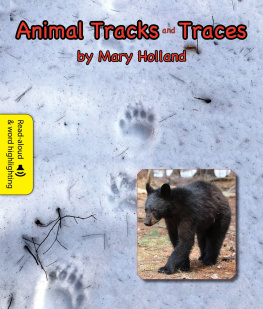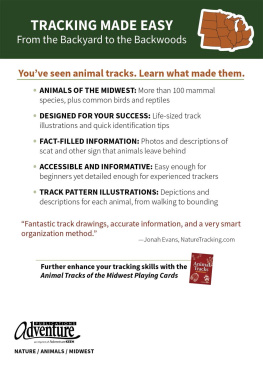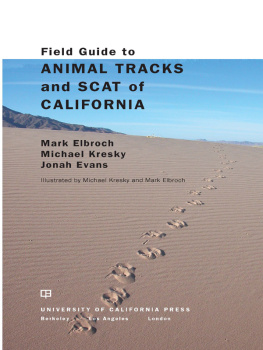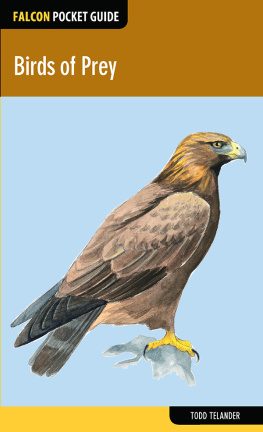Telander - Animal Tracks
Here you can read online Telander - Animal Tracks full text of the book (entire story) in english for free. Download pdf and epub, get meaning, cover and reviews about this ebook. City: Guilford;Connecticut, year: 2013, publisher: Falcon Guides, genre: Children. Description of the work, (preface) as well as reviews are available. Best literature library LitArk.com created for fans of good reading and offers a wide selection of genres:
Romance novel
Science fiction
Adventure
Detective
Science
History
Home and family
Prose
Art
Politics
Computer
Non-fiction
Religion
Business
Children
Humor
Choose a favorite category and find really read worthwhile books. Enjoy immersion in the world of imagination, feel the emotions of the characters or learn something new for yourself, make an fascinating discovery.

Animal Tracks: summary, description and annotation
We offer to read an annotation, description, summary or preface (depends on what the author of the book "Animal Tracks" wrote himself). If you haven't found the necessary information about the book — write in the comments, we will try to find it.
Telander: author's other books
Who wrote Animal Tracks? Find out the surname, the name of the author of the book and a list of all author's works by series.
Animal Tracks — read online for free the complete book (whole text) full work
Below is the text of the book, divided by pages. System saving the place of the last page read, allows you to conveniently read the book "Animal Tracks" online for free, without having to search again every time where you left off. Put a bookmark, and you can go to the page where you finished reading at any time.
Font size:
Interval:
Bookmark:
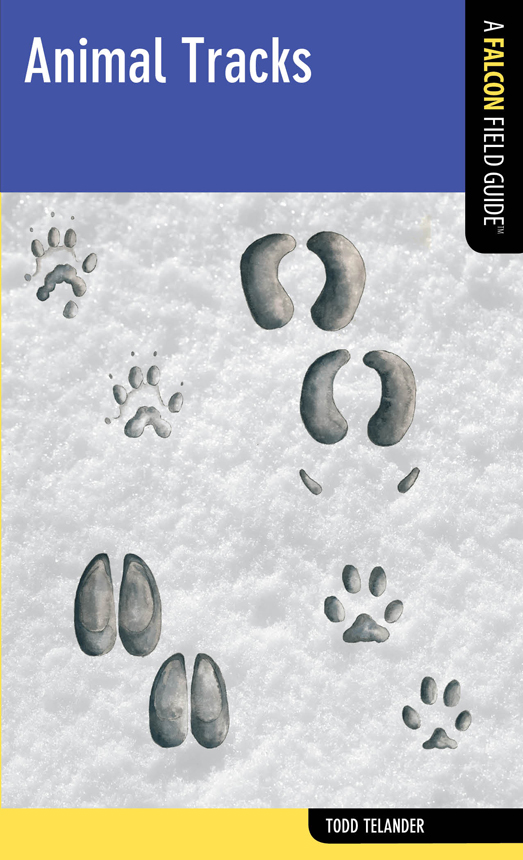

Animal Tracks
Todd Telander

To my wife, Kirsten, my children, Miles and Oliver, and my parents, all of whom have supported and encouraged me through the years. Special thanks to Jim Halfpenny for his expert and gracious assistance in developing the illustrations, and for sharing his vast knowledge of tracking.

Copyright 2012 Morris Book Publishing, LLC
Illustrations 2012 Todd Telander
ALL RIGHTS RESERVED. No part of this book may be reproduced or transmitted in any form by any means, electronic or mechanical, including photocopying and recording, or by any information storage and retrieval system, except as may be expressly permitted in writing from the publisher. Requests for permission should be addressed to Globe Pequot Press, Attn: Rights and Permissions Department, PO Box 480, Guilford CT 06437.
FalconGuides is a trademark and Falcon, FalconGuides, and Outfit Your Mind are registered trademarks of Morris Book Publishing, LLC.
Illustrations by Todd Telander
Text design: Sheryl P. Kober
Project editor: David Legere
Layout: Sue Murray
Library of Congress Cataloging-in-Publication Data is available on file.
ISBN 978-0-7627-9487-4
Contents
Introduction
The tracks that animals leave are not only indications of what species they are but also clues as to their life history, habitats, and movements. Wild animals are generally wary of humans, and much of their activity remains undetected by our eyes. But even if they themselves are not seen, they leave a record of their existence by their tracks. This book is designed to serve as an introduction to recognizing and appreciating the hundreds of different kinds of tracks that we can find in the United States, and includes those of mammals, birds, reptiles, and amphibians. With keen observence, not only will you be better able to determine which animal made a certain track, but you will also allow yourself to become closer to their world, their habits, and their secrets. I list here some of the more common animal tracks you are likely to encounter in the United States. There are, of course, many others that are not included, but most will be similar to the individual species or animal families listed here, and will give you a starting point to refining your searches and your understanding of the wild world, from mountaintops to seashores to desert plains.
Notes about the Species Accounts
Names
The common name as well as the scientific name is included for each entry. Since common names tend to vary regionally, or there may be more than one common name for each species, the universally accepted scientific name of genus and species (such as Spermophilus lateralis for the golden-mantled ground squirrel) is more reliable to be certain of identification. Also, one can often learn interesting facts about an animal by the English translation of its Latin name. For instance, the generic name, Spermophilus, means lover of seeds, and the specific name, lateralis, relates to the lateral striping on the sides of the squirrel.
Families
Animals are grouped into families based on similar traits, behaviors, and genetics. I include the family names for each animal to clarify its relationship to other species in the same family, and to hopefully make it easier to identify an unfamiliar track. For example, members of the mustelid family all have five toes on the front and rear feet, with a small and less pronounced inner toe. So if you see this pattern, it makes sense to look in the section on mustelids and narrow your search from there.
Size/Weight
The size given for each animal is the average length, and for some animals the tail length is given separately. Weight is also an average. Keep in mind that many animals exhibit tremendous variability in size and weight, and that males and females may differ in size.
Range
Range is the general geographic space that a species occupies, and in this book includes only those areas within the United States. Range and habitat must be considered together to determine if a given animal is likely to be found in a given area.
Habitat
Habitat includes the local conditions of climate, vegetation, soil types, water availability, elevation, and terrain. Some animals have very specific habitat requirements, while others may occupy just about any habitat within their range.
Track Size
The size of tracks is given as an average measurement of width by length. Separate measurements are given for front and rear feet, except for the birds (who only have one set of legs). If parts of the track are usually evident and diagnostic, like claws and heel pads, then they are included in the measurement. If not, they are omitted from the measurement and mentioned in the text. In the field, the size of a track can vary quite a bit depending on the substrate or how the animal was moving. Toes may also spread in loose soils or snow, which can increase the width of the track considerably.
Illustrations
The illustrations show the right side front and rear feet of each animal. For birds, the left and right foot are shown. I have illustrated the tracks to show the basic pattern and all components of the footprint that may register. It is important to remember that a perfect track is raremost are quite vague, messy, and lack many of the features that are written about or illustrated. Use the illustrations to help visualize the fundamental pattern and organization of the foot, not necessarily as template for a perfect match.
Track Topography and Terms
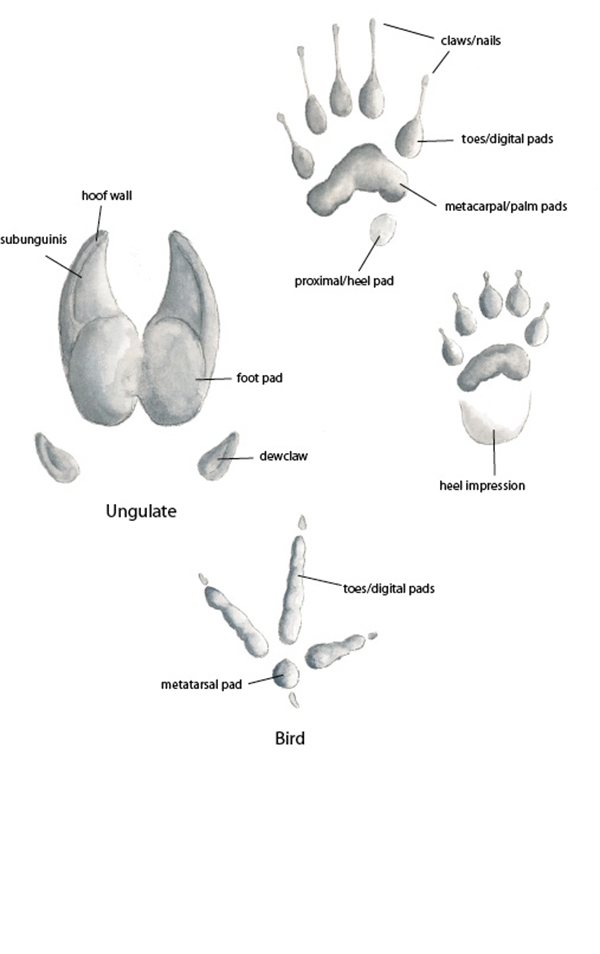
MAMMALS
MAMMALS
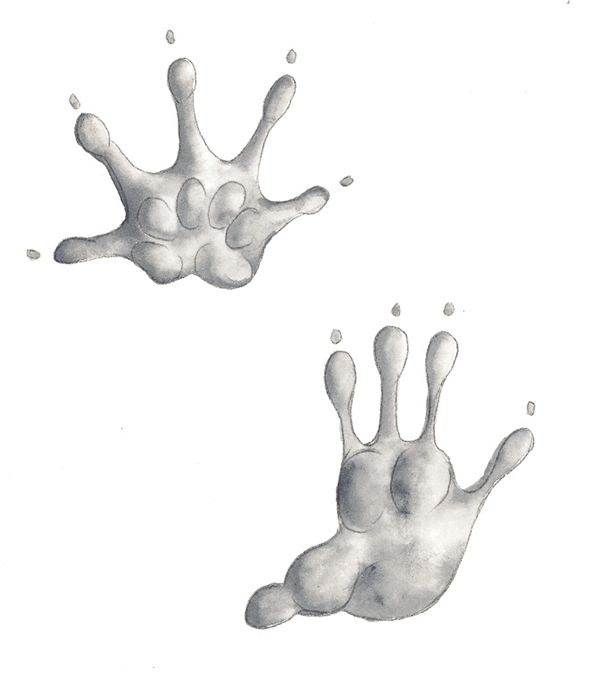
Virginia Opossum, Didelphis virginiana
Family Didelphidae (Skunks)
Size/Weight: approx. 30" long with tail; approx. 10 lbs.
Range: Central and eastern United States, portions of Pacific states
Habitat: Woodlands, riparian zones, urban areas, farms
The Virginia opossum is a marsupial, meaning it bears premature young to develop in an external pouch, and is the only member of this group in North America. It is stocky, with relatively small limbs, a pointed snout, and a long, round, hairless tail. The color is mottled grayish with a white face and dark ears. It is nocturnal, mostly solitary, and reasonably adept at swimming and climbing. It has a highly varied diet that includes nuts, fruit, insects, small animals, and carrion. Opossums have a curious habit of feigning death when under attack, then resuming as normal once safe.
Track size (front): 2" wide x 1" long
Track size (rear): 2" wide x 2" long
Description of Track: The front foot is noticeably wider than the rear. There are five toes on both the front and rear feet. The rear foot has an unusual opposable thumb as the inner digit, is unclawed, and appears quite separate from the other toes. The claws may or may not register in the track. There are six, fairly distinct metacarpal and proximal pads on the front, while those on the rear are larger and less obvious. Tail drag may obscure the track in a walk, but the tail is held upright in faster gaits.
Font size:
Interval:
Bookmark:
Similar books «Animal Tracks»
Look at similar books to Animal Tracks. We have selected literature similar in name and meaning in the hope of providing readers with more options to find new, interesting, not yet read works.
Discussion, reviews of the book Animal Tracks and just readers' own opinions. Leave your comments, write what you think about the work, its meaning or the main characters. Specify what exactly you liked and what you didn't like, and why you think so.

